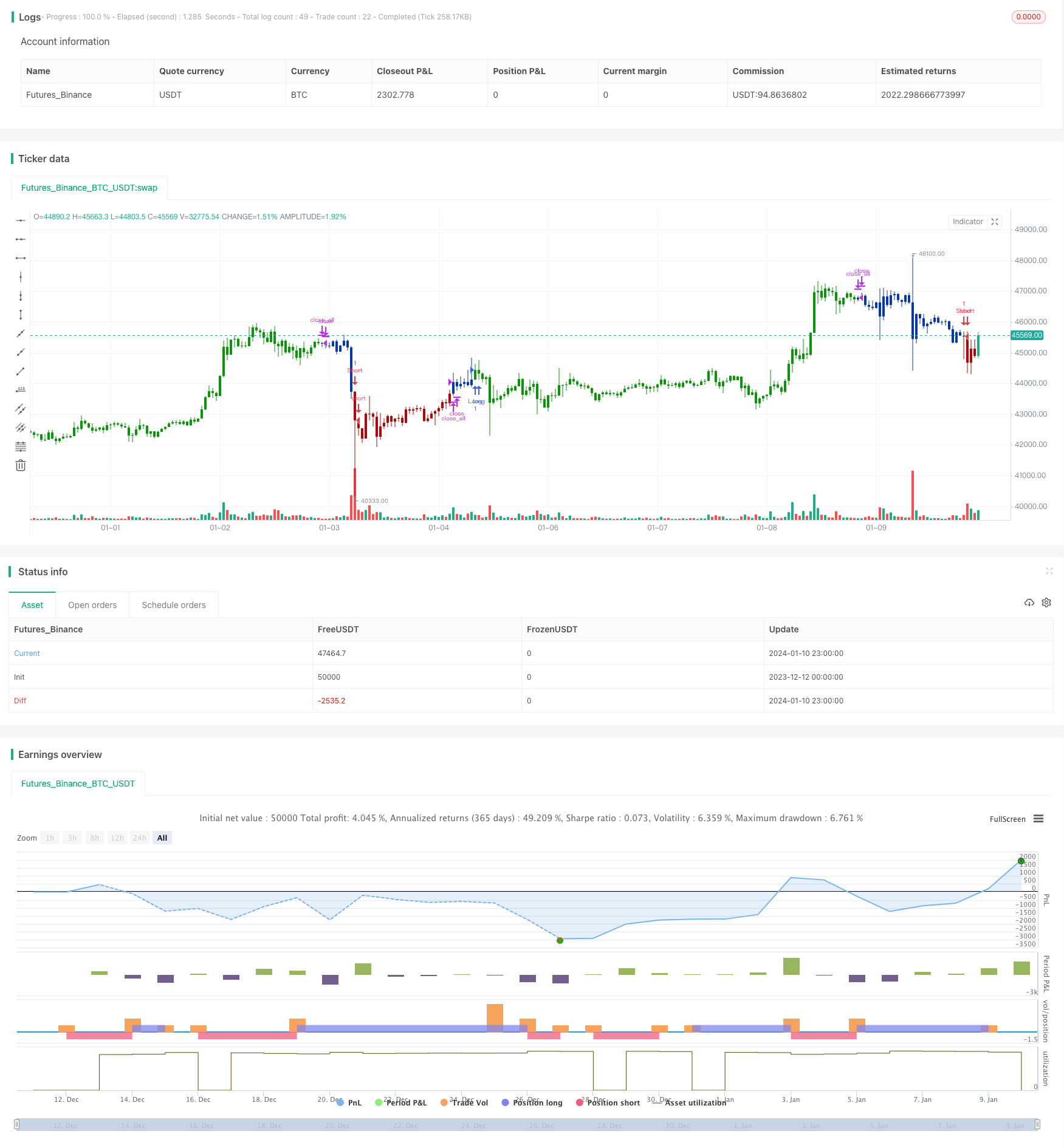
概述
量化双因子反转惯性交易策略(Quant Dual Factor Reversal Inertia Trading Strategy)是一种结合价格反转信号和市场惯性信号的量化交易策略。该策略首先利用随机指标实现价格反转信号,然后结合相对波动率指标的市场惯性信号,最终实现双因子驱动的交易决策。
策略原理
该策略主要基于两部分:
价格反转部分采用乌尔夫·詹森(Ulf Jensen)在其著作中提出的思想,具体为:当收盘价连续2日上涨,而9日Slow Stochastic指标低于50时,做多;当收盘价连续2日下跌,而9日Fast Stochastic指标高于50时,做空。
市场惯性部分采用相对波动率指标(RVI)。该指标值在0到100之间波动,高于50表示市场长期趋势为上涨;低于50表示市场长期趋势为下跌。
综上,该策略整合价格反转信号和市场惯性信号,最终判断当前市场方向。当两者信号一致时,产生交易信号。
优势分析
该策略最大的优势在于结合了反转和趋势两大交易思路。反转信号能够捕捉短期调整提供交易机会;惯性信号确保只在长期趋势一致时开仓,可有效过滤噪音。
另外,双因子驱动可提高信号质量,同时Stochastic指标参数优化和RVI平滑优化也为策略优化提供了空间。
风险分析
该策略面临的主要风险有:
反转信号识别不准确的风险。需要验证参数是否合理。
惯性信号发出错误信号的风险。RVI指标本身会有滞后,需要平滑参数调整。
双因子信号时间匹配不当,错过交易机会的风险。需要测试不同参数下匹配情况。
此外,反转类策略会面临趋势市场下亏损加剧的风险。需要严格遵守止损规则。
优化方向
该策略可从以下几个方面进行优化:
优化Stochastic指标的参数,识别反转信号的质量和及时性。
优化RVI指标的平滑参数,提高惯性判断的准确性。
测试不同持仓时间,确定最佳持仓周期。
加入止损机制。回测不同的止损点,找到最优止损位置。
可以考虑加入其他因子信号,例如交易量异动等,形成多因子驱动。
总结
量化双因子反转惯性交易策略综合考虑反转和趋势因子,使用 stochastic指标和RVI指标产生交易信号。策略具有双因子驱动、反转机会捕捉以及信号过滤等优势,可通过多方面参数优化进一步改善。风险控制也尤为重要,需要严格执行止损。该策略为量化交易提供了一个很好的思路。
/*backtest
start: 2023-12-12 00:00:00
end: 2024-01-11 00:00:00
period: 1h
basePeriod: 15m
exchanges: [{"eid":"Futures_Binance","currency":"BTC_USDT"}]
*/
//@version=4
////////////////////////////////////////////////////////////
// Copyright by HPotter v1.0 27/11/2020
// This is combo strategies for get a cumulative signal.
//
// First strategy
// This System was created from the Book "How I Tripled My Money In The
// Futures Market" by Ulf Jensen, Page 183. This is reverse type of strategies.
// The strategy buys at market, if close price is higher than the previous close
// during 2 days and the meaning of 9-days Stochastic Slow Oscillator is lower than 50.
// The strategy sells at market, if close price is lower than the previous close price
// during 2 days and the meaning of 9-days Stochastic Fast Oscillator is higher than 50.
//
// Second strategy
// The inertia indicator measures the market, stock or currency pair momentum and
// trend by measuring the security smoothed RVI (Relative Volatility Index).
// The RVI is a technical indicator that estimates the general direction of the
// volatility of an asset.
// The inertia indicator returns a value that is comprised between 0 and 100.
// Positive inertia occurs when the indicator value is higher than 50. As long as
// the inertia value is above 50, the long-term trend of the security is up. The inertia
// is negative when its value is lower than 50, in this case the long-term trend is
// down and should stay down if the inertia stays below 50.
//
// You can change long to short in the Input Settings
// Please, use it only for learning or paper trading. Do not for real trading.
//
// WARNING:
// - For purpose educate only
// - This script to change bars colors.
////////////////////////////////////////////////////////////
Reversal123(Length, KSmoothing, DLength, Level) =>
vFast = sma(stoch(close, high, low, Length), KSmoothing)
vSlow = sma(vFast, DLength)
pos = 0.0
pos := iff(close[2] < close[1] and close > close[1] and vFast < vSlow and vFast > Level, 1,
iff(close[2] > close[1] and close < close[1] and vFast > vSlow and vFast < Level, -1, nz(pos[1], 0)))
pos
Inertia(Period, Smooth) =>
pos = 0.0
nU = 0.0
nD = 0.0
xPrice = close
StdDev = stdev(xPrice, Period)
d = iff(close > close[1], 0, StdDev)
u = iff(close > close[1], StdDev, 0)
nU := (13 * nz(nU[1],0) + u) / 14
nD := (13 * nz(nD[1],0) + d) / 14
nRVI = 100 * nU / (nU + nD)
nRes = ema(nRVI, Smooth)
pos :=iff(nRes > 50, 1,
iff(nRes < 50, -1, nz(pos[1], 0)))
pos
strategy(title="Combo Backtest 123 Reversal & Inertia Strategy", shorttitle="Combo", overlay = true)
Length = input(14, minval=1)
KSmoothing = input(1, minval=1)
DLength = input(3, minval=1)
Level = input(50, minval=1)
//-------------------------
Period = input(10, minval=1)
Smooth = input(14, minval=1)
reverse = input(false, title="Trade reverse")
posReversal123 = Reversal123(Length, KSmoothing, DLength, Level)
posInertia = Inertia(Period, Smooth)
pos = iff(posReversal123 == 1 and posInertia == 1 , 1,
iff(posReversal123 == -1 and posInertia == -1, -1, 0))
possig = iff(reverse and pos == 1, -1,
iff(reverse and pos == -1 , 1, pos))
if (possig == 1)
strategy.entry("Long", strategy.long)
if (possig == -1)
strategy.entry("Short", strategy.short)
if (possig == 0)
strategy.close_all()
barcolor(possig == -1 ? #b50404: possig == 1 ? #079605 : #0536b3 )